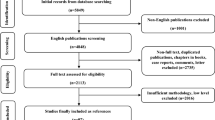Abstract
To investigate whether aging affects surgical outcomes by comparing the results of two patient groups undergoing PNL: those over 60 and those under 60. A retrospective screen was made for patients undergoing conventional PNL surgery for renal stones performed in two separate centers between 2010 and 2013. 520 patients included were classified into age groups: patients aged 18–59 comprised Group-1 and those aged over 60 comprised Group-2. Those between 60–69 years (sexagenarian) were assigned to Group-2a; 70–79 years (septuagenarian) to Group-2b; and 80–89 years (octogenarian) to Group-2c. Patients' demographic characteristics (accompanying comorbidities, ASA scores, body mass indices and stone size) and perioperative values (duration of surgery and hospital stay, success and complication rates) were compared between the groups. Mean stone size was similar in groups (30.1 ± 15.5 vs. 31.5 ± 15.4 mm, p = 0.379). The mean ASA value for the patients in Group-1 was 1.61; significantly lower than that in the other groups (p = 0.000). The level of accompanying comorbidities in Group-1 was significantly lower than that of the other groups (p = 0.000). The mean duration of surgery, postoperative hematocrit drop, complication and success rate were statistically similar in Groups 1 and 2 (p = 0.860, p = 0.430, p = 0.7, and p = 0.66, respectively). The duration of hospital stay was significantly shorter in the patients in Group-1 compared to those in Group-2 (p = 0.008). In experienced hands, PNL can be safely and reliably performed in the treatment of renal stones in elderly patients.

Similar content being viewed by others
Abbreviations
- PNL:
-
Percutaneous nephrolithotomy
- URS:
-
Ureteroscopy
- SWL:
-
Shockwave lithotripsy
- WHO:
-
World Health Organization
- US:
-
Ultrasonography
- IVU:
-
Intravenous urography
- CT:
-
Computed tomography
- KUB:
-
Kidney Ureters and Bladder radiography
References
Turk C, Knoll T, Petrik A, Sarica K, Skolarikos A, Straub M, Seitz C (2013) Selection of procedure for active removal of kidney stones. EUA Guidelines on Urolithiasis, pp 46–48
Rana AM, Bhojwani JP (2009) Percutaneous nephrolithotomy in renal anomalies of fusion, ectopia, rotation, hypoplasia, and pelvicalyceal aberration: uniformity in heterogeneity. J Endourol 23:609–614
Gupta N, Mishra S, Seth A, Anand A (2009) Percutaneous nephrolithotomy in abnormal kidneys: Single-center experience. Urology 73:710–714
Schuster TK, Smaldone MC, Averch TD, Ost MC (2009) Percutaneous nephrolithotomy in children. J Endourol 23:1699–1705
Stoller ML, Bolton D, St Lezin M, Lawrence M (1994) Percutaneous nephrolithotomy in the elderly. Urology 44:651–654
Sahin A, Atsü N, Erdem E, Oner S, Bilen C, Bakkaloglu M, Kendi S (2001) Percutaneous nephrolithotomy in patients aged 60 years or older. J Endourol 15(5):489–491
Resorlu B, Diri A, Atmaca AF, Tuygun C, Oztuna D, Bozkurt OF, Unsal A (2012) Can we avoid percutaneous nephrolithotomy in high-risk elderly patients using the Charlson comorbidity index? Urology 79(5):1042–1047
Nakamon T, Kitirattrakarn P, Lojanapiwat B (2013) Outcomes of percutaneous nephrolithotomy: comparison of elderly and younger patients. Int Braz J Urol 39:692–701
Kuzgunbay B, Turunc T, Yaycioglu O, Kayis AA, Gul U, Egilmez T, Aygun C, Ozkardes H (2011) Percutaneous nephrolithotomy for staghorn kidney stones in elderly patients. Int Urol Neph 43:639–643
Dogan HS, Tekgul S (2012) Minimally invasive surgical approaches to kidney stones in children. Curr Urol Rep 13:298–306
WHO (2013) Ageing and life course. http://www.who.int/ageing/en/index.html.19.09.2013
Okeke Z, Smith AD, Labate G, D’Addesi A, Venkatesh R, Assimos D, Stijbos WE, de la Rosette JJ, CROES PCNL Study Group (2012) Prospective comparison of outcomes of percutaneous nephrolithotomy in elderly patients versus younger patients. J Endourol 26:996–1001
Anagnostou T, Thompson T, Ng C-F, Moussa S, Smith G, Tolley DA (2008) Safety and outcome of percutaneous nephrolithotomy in the elderly: retrospective comparison to a younger patient group. J Endourol 22:2139–2146
Akbari NR (2007) Percutaneous nephrolithotripsy complication in the elderly. Aging Male 10:77–87
Tonner PH, Kampen J, Scholz J (2003) Pathophysiological changes in the elderly. Best Pract Res Clin Anaesthesiol 17:163–177
Priebe H (2000) The aged cardiovascular risk patient. Br J Anaesth 85:763–778
Sieber FE (2009) Postoperative delirium in the elderly surgical patient. Anesthesiol Clin 27:451–464
Conflict of interest
None.
Author information
Authors and Affiliations
Corresponding author
Rights and permissions
About this article
Cite this article
Buldu, I., Tepeler, A., Karatag, T. et al. Does aging affect the outcome of percutaneous nephrolithotomy?. Urolithiasis 43, 183–187 (2015). https://doi.org/10.1007/s00240-014-0742-4
Received:
Accepted:
Published:
Issue Date:
DOI: https://doi.org/10.1007/s00240-014-0742-4




